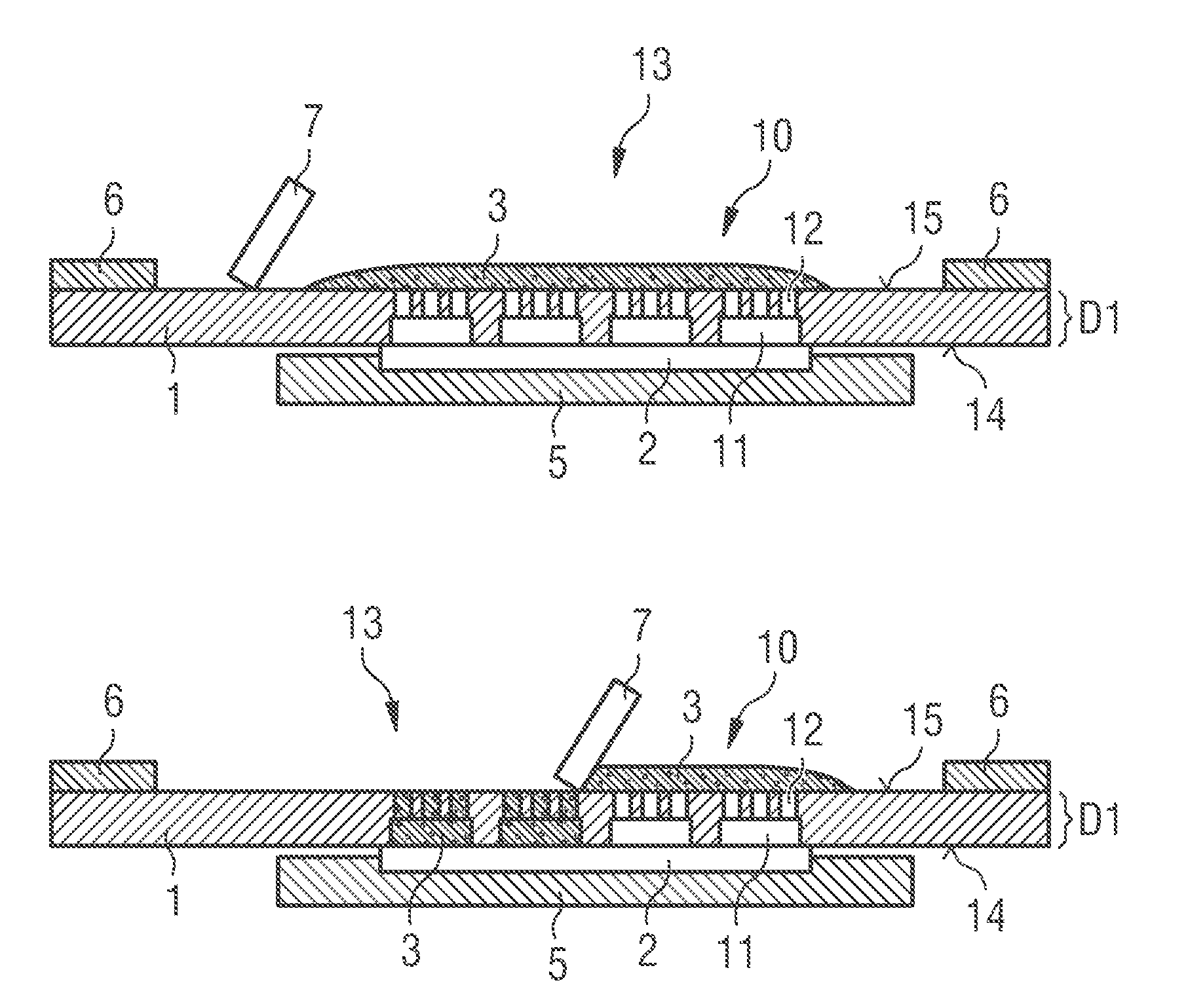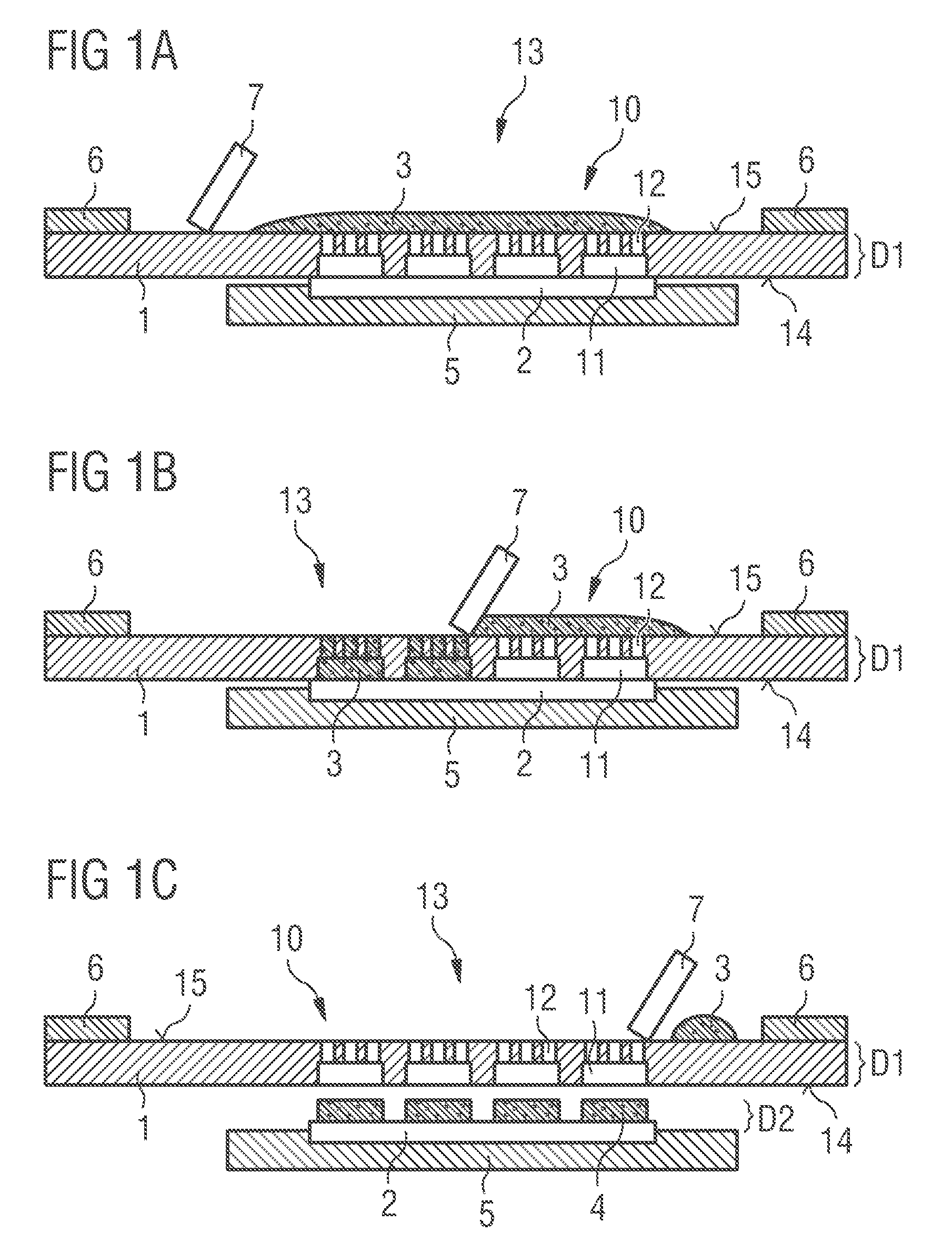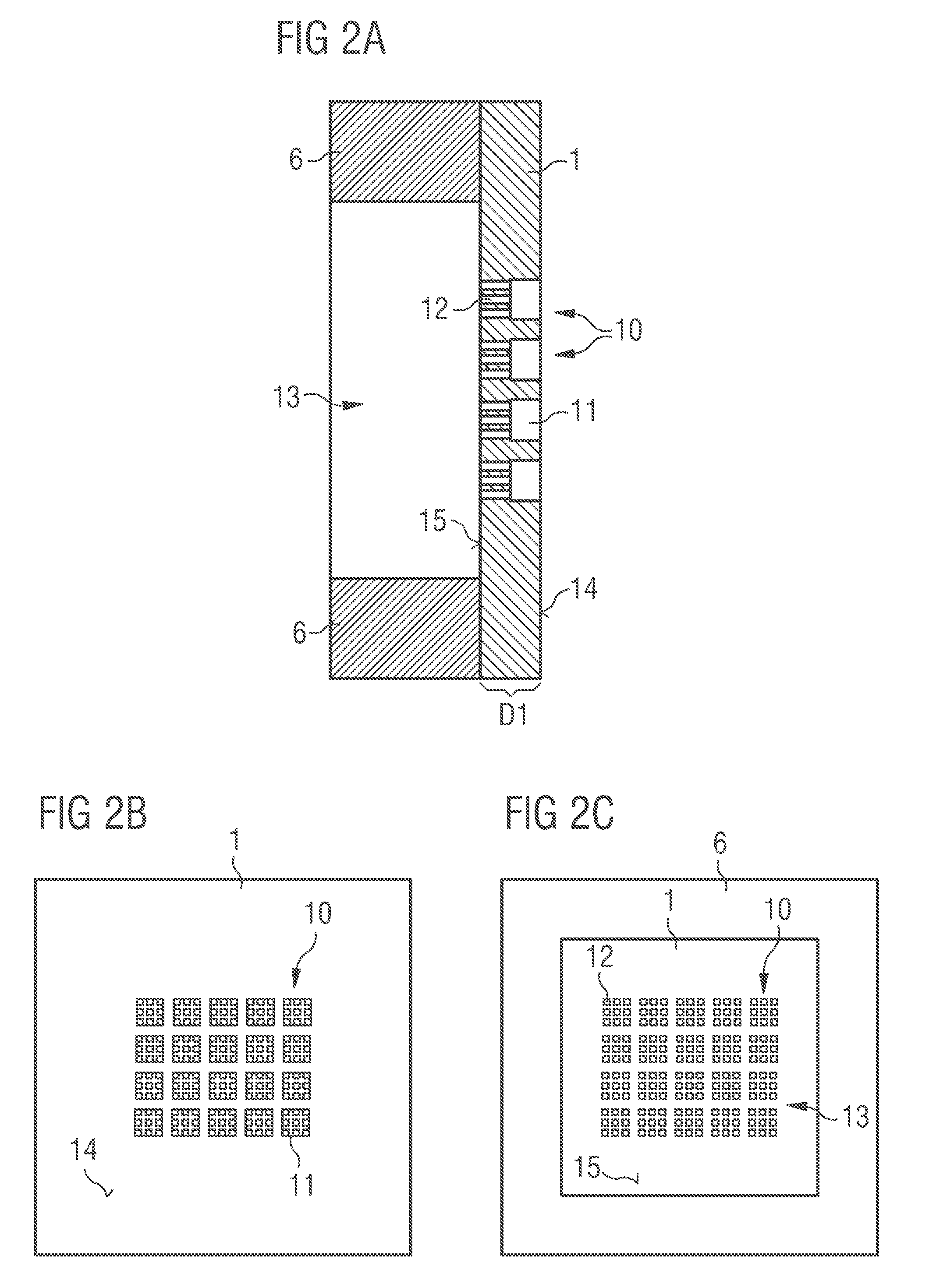Method for producing a conversion lamina and conversion lamina
a technology of conversion laminae and laminae, which is applied in the direction of electrical equipment, semiconductor devices, solid-state devices, etc., can solve the problem that the high layer thickness of the conversion laminae cannot be achieved by conventional production methods, and achieve the effect of improving reproducibility, high layer thickness, and improving edge accuracy
- Summary
- Abstract
- Description
- Claims
- Application Information
AI Technical Summary
Benefits of technology
Problems solved by technology
Method used
Image
Examples
Embodiment Construction
[0045]In FIGS. 1A to 1C, method steps for the production of a multiplicity of conversion laminae are shown. Conversion laminae produced in such a way are suitable in particular for use in combination with radiation-emitting semiconductor components, for example, LEDs. In this case, the conversion laminae are suitable for converting radiation emitted by the radiation-emitting semiconductor component at least partially into radiation of a another wavelength, so that a semiconductor component comprising a conversion lamina arranged thereon has mixed radiation consisting of emitted radiation and converted radiation. The conversion laminae produced are in this case arranged directly after a radiation exit side of the semiconductor component, for example, directly on a radiation exit surface.
[0046]In order to produce the conversion laminae, a template 1 is used in particular. The template 1 has a thickness D1 in a range of between 80 μm and 150 μm, preferably between 100 μm and 110 μm. Th...
PUM
| Property | Measurement | Unit |
|---|---|---|
| thickness | aaaaa | aaaaa |
| thickness | aaaaa | aaaaa |
| thicknesses | aaaaa | aaaaa |
Abstract
Description
Claims
Application Information
 Login to View More
Login to View More - R&D
- Intellectual Property
- Life Sciences
- Materials
- Tech Scout
- Unparalleled Data Quality
- Higher Quality Content
- 60% Fewer Hallucinations
Browse by: Latest US Patents, China's latest patents, Technical Efficacy Thesaurus, Application Domain, Technology Topic, Popular Technical Reports.
© 2025 PatSnap. All rights reserved.Legal|Privacy policy|Modern Slavery Act Transparency Statement|Sitemap|About US| Contact US: help@patsnap.com



